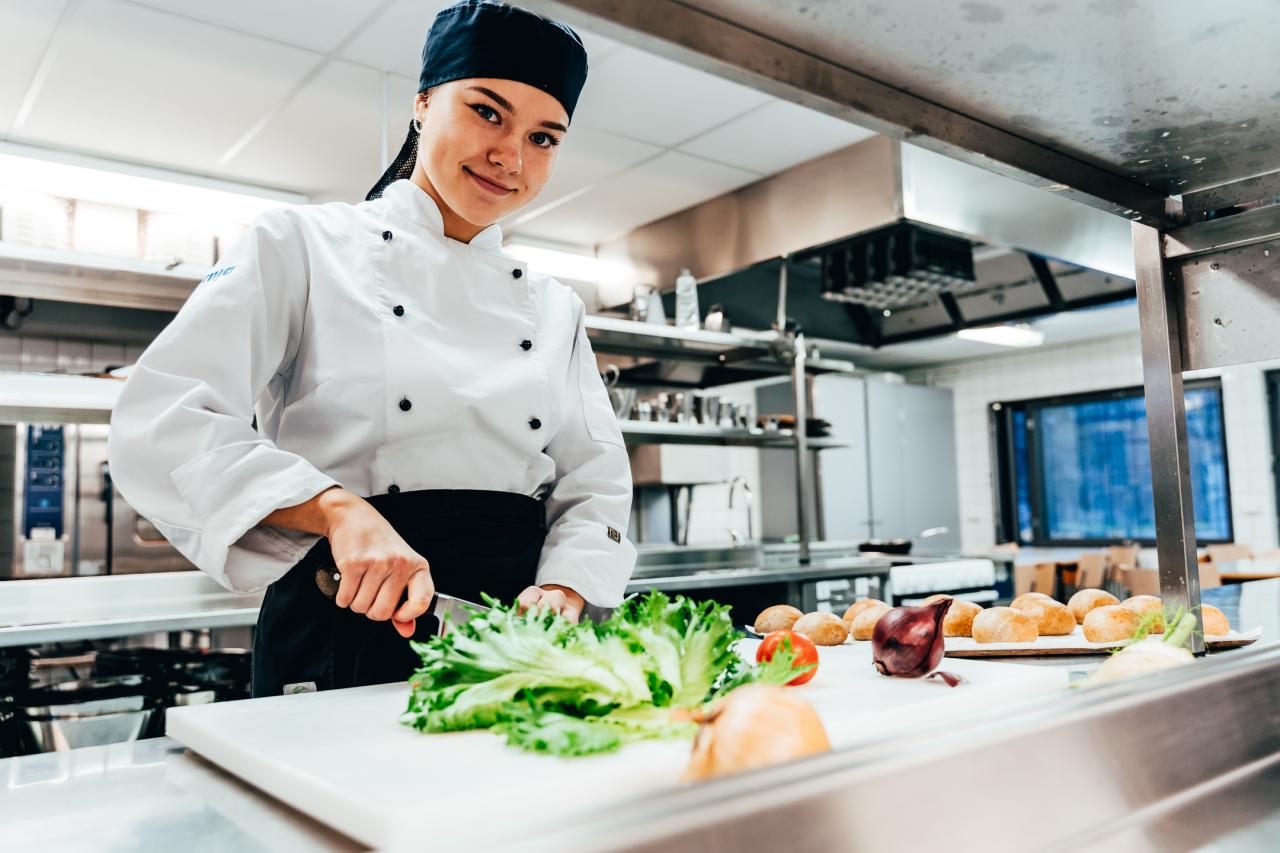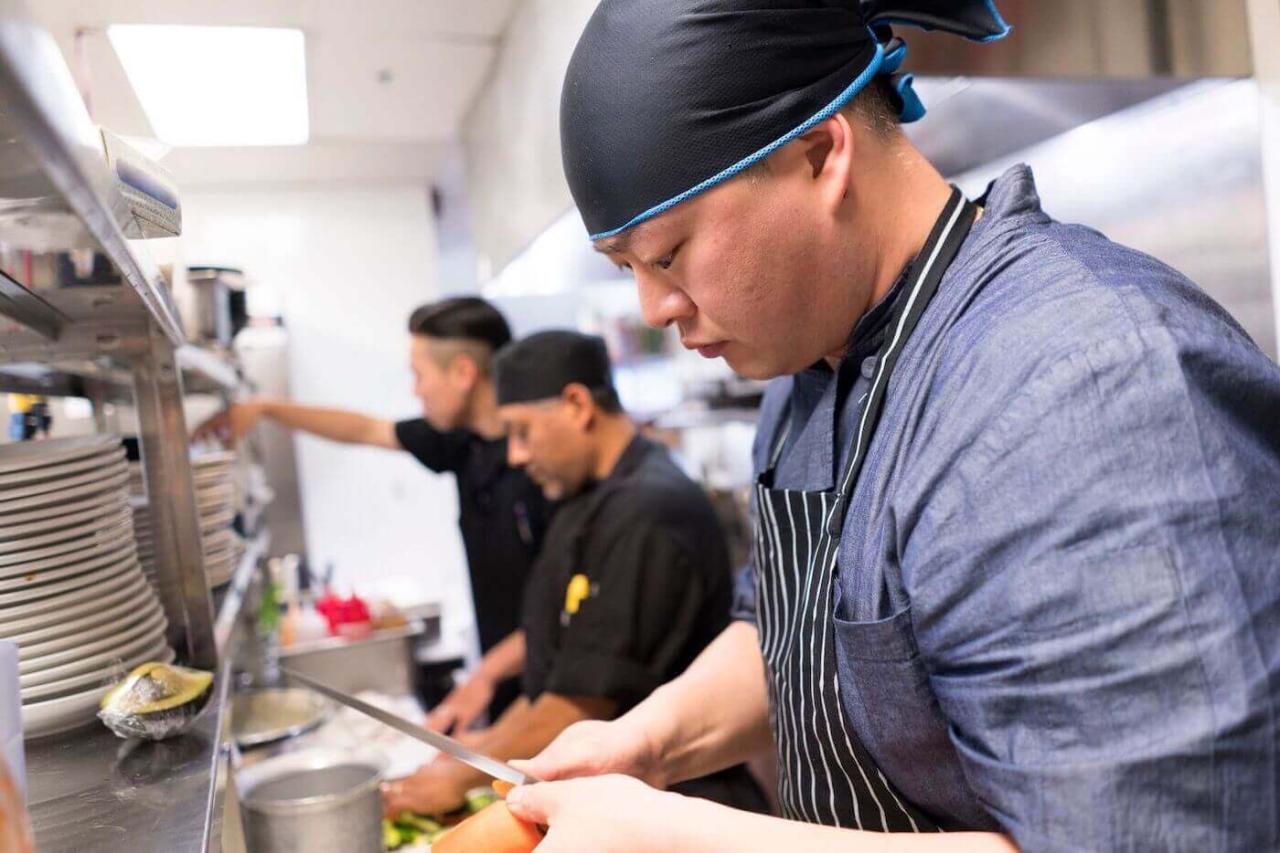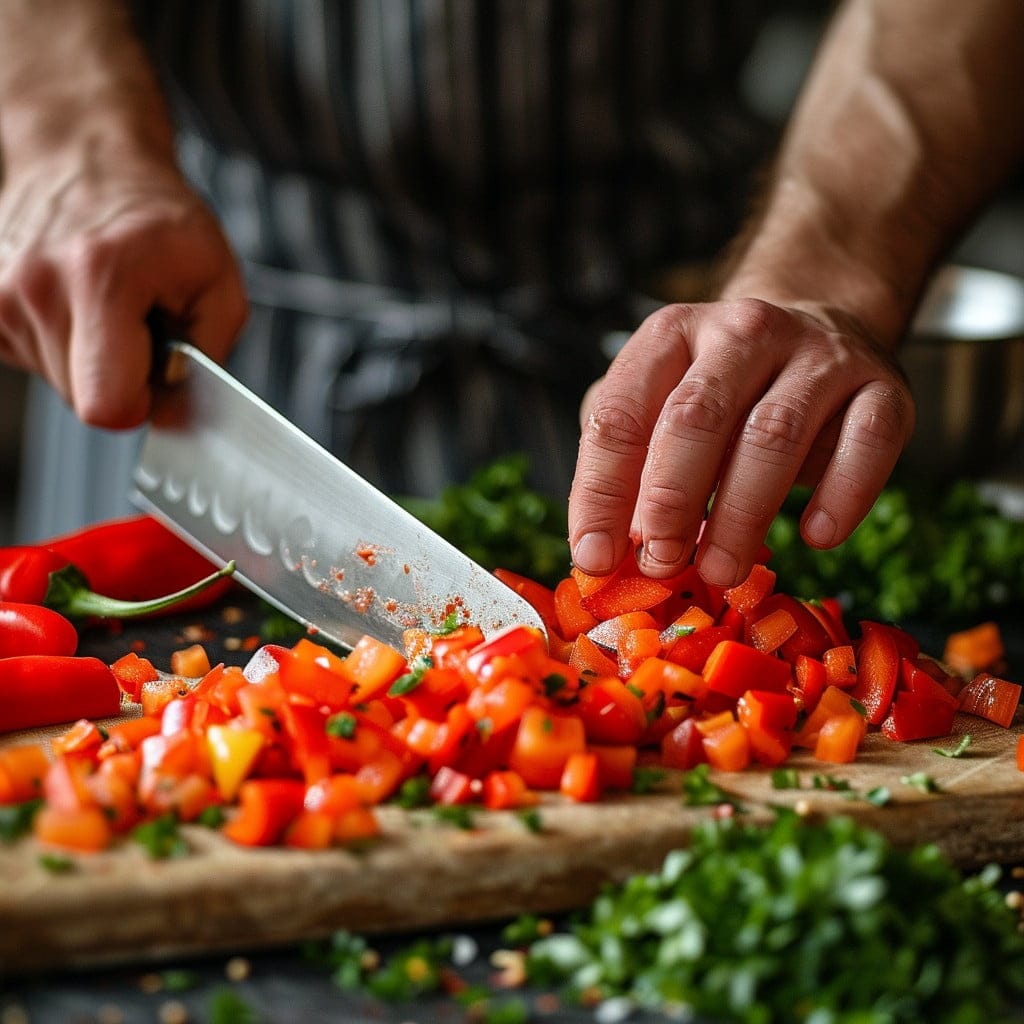Discovering how to cook dairy free recipes opens up a world of delicious and healthy meal options suitable for various dietary needs. Whether for allergy concerns, lactose intolerance, or personal preference, mastering dairy-free cooking can enhance your culinary repertoire and provide nutritious alternatives to traditional dishes. This guide offers practical tips, essential pantry staples, and flavorful recipes to help you create satisfying dairy-free meals with confidence.
From understanding common dairy ingredients and their substitutes to exploring effective cooking techniques, you’ll learn how to craft everything from breakfast favorites to hearty dinners and tempting desserts. Embracing dairy-free cooking not only broadens your dietary options but also encourages the use of wholesome, plant-based ingredients that elevate your dishes in both taste and health benefits.
Introduction to Dairy-Free Cooking
Adopting dairy-free recipes has become increasingly important for individuals with dietary restrictions, lactose intolerance, or allergies to dairy products. Additionally, many choose dairy-free options for health reasons, such as reducing saturated fat intake or aligning with specific dietary lifestyles like veganism. Understanding the significance of dairy-free cooking allows for greater inclusivity in meal preparation, ensuring that dietary needs are met without sacrificing flavor or nutritional value.
In dairy-free cooking, it is essential to recognize common dairy ingredients that are typically avoided, such as milk, butter, cheese, yogurt, and cream. Fortunately, a variety of plant-based substitutes can replace these ingredients effectively, offering similar textures and flavors while catering to dietary restrictions. Exploring these alternatives broadens culinary possibilities and ensures that dishes remain delicious and satisfying without dairy components.
Comparison of Dairy Ingredients and Substitutes
This table provides a clear overview of frequently used dairy ingredients, suitable substitutes, their typical uses, and flavor profiles to aid in crafting dairy-free recipes confidently.
| Dairy Ingredients | Dairy-Free Substitutes | Typical Uses | Flavor Profiles |
|---|---|---|---|
| Milk | Almond milk, soy milk, oat milk, coconut milk | Baking, cereals, beverages, sauces | Nutty, creamy, slightly sweet, or neutral depending on the variety |
| Butter | Coconut oil, vegan butter, olive oil, margarine (dairy-free) | Baking, frying, sautéing, spreads | Rich, buttery, slightly coconutty, or neutral |
| Cheese | Cashew cheese, nutritional yeast, vegan cheese slices | Sandwiches, salads, pizzas, pasta | Cheesy, nutty, savory, often with a nutty or tangy undertone |
| Yogurt | Coconut yogurt, almond yogurt, soy yogurt | Breakfast, smoothies, dips, baking | Creamy, tangy, sometimes slightly sweet or neutral |
Techniques for Cooking Dairy-Free Recipes

Adapting traditional cooking methods to be dairy-free involves understanding various substitution techniques that maintain flavor, texture, and nutritional value. Whether preparing baked goods, sautéed dishes, or rich sauces, using appropriate dairy-free alternatives ensures delicious results without compromising the integrity of your recipes. Mastering these techniques allows for versatile and satisfying dairy-free cooking that suits a variety of tastes and dietary needs.
Implementing effective substitution methods requires familiarity with common dairy alternatives and their proper usage in different culinary contexts. From replacing butter in baking to thickening sauces without cream, these techniques empower you to create a wide array of dairy-free dishes with confidence and consistency.
Replacing Dairy in Cooking Techniques
Substituting dairy ingredients involves selecting appropriate alternatives that mimic the properties of traditional dairy products. The following methods are essential for achieving successful dairy-free recipes across various cooking techniques:
- Replacing butter with coconut oil or margarine: Coconut oil provides a rich, slightly sweet flavor ideal for baking, sautéing, and frying. Use an equal amount of coconut oil as a direct substitute for butter. Margarine specifically formulated for baking can also be used, but it’s important to check that it is dairy-free and free from trans fats for healthier options.
- Using plant-based milks in baking recipes: Almond, soy, oat, rice, or cashew milks serve as excellent replacements for cow’s milk in baked goods. These plant-based milks add moisture and flavor while keeping the recipes dairy-free. When substituting, use a 1:1 ratio, but note that some plant milks may alter the taste slightly, so choose one that complements your recipe.
- Thickening sauces with cashew cream or arrowroot starch: Cashew cream, made by blending soaked cashews with water, provides a creamy texture similar to dairy-based creams. Arrowroot starch, dissolved in cold water, can be used to thicken sauces quickly without altering flavor. These techniques are especially effective for creating rich, smooth sauces and soups in dairy-free cooking.
Step-by-Step Procedures for Common Dairy-Free Preparation Techniques
Applying these methods involves precise steps to ensure the desired outcome. Below are detailed procedures for each key technique:
- Replacing butter with coconut oil or margarine:
- Measure an equal amount of coconut oil or dairy-free margarine needed for your recipe.
- If using solid coconut oil, melt it gently over low heat or in the microwave until liquefied.
- Add the melted or softened oil directly into your mixture, following your recipe’s instructions.
- Mix thoroughly to ensure even distribution and proper incorporation into baked goods or sautéed dishes.
- Incorporating plant-based milks in baking:
- Choose your preferred plant-based milk based on flavor and recipe compatibility.
- Replace the cow’s milk called for in the recipe with an equal volume of plant-based milk.
- For recipes requiring a richer texture, consider adding a tablespoon of plant-based cream or coconut milk.
- Mix the ingredients as usual, adjusting the liquid content if necessary to achieve the desired batter or dough consistency.
- Thickening sauces with cashew cream or arrowroot starch:
- Cashew Cream: Soak 1 cup of raw cashews in water for at least 4 hours or overnight. Drain and blend with ¾ cup of water until smooth and creamy. Use as a substitute for heavy cream in sauces.
- Arrowroot Starch: Dissolve 1 to 2 teaspoons of arrowroot starch in a small amount of cold water. Add the slurry to the simmering sauce and stir constantly until thickened, typically within a minute or two. Avoid boiling after adding arrowroot to prevent breaking down the starch’s thickening properties.
Proper substitution and technique are critical to achieving the desired flavor and texture in dairy-free recipes. Experimenting with these methods allows cooks to tailor dishes to personal preferences while maintaining nutritional balance and culinary integrity.
Dairy-Free Lunch and Dinner Ideas

Creating satisfying and flavorful dairy-free lunch and dinner options is essential for individuals with lactose intolerance, dairy allergies, or those choosing a plant-based lifestyle. By exploring a variety of recipes such as dairy-free pasta dishes, stir-fries, and hearty salads, you can enjoy diverse, nutritious meals without compromise. Understanding different cooking methods and flavor combinations will enhance your culinary repertoire and ensure each meal is both delightful and nourishing.
Additionally, preparing homemade dairy-free dressings and marinades allows for customization and adds depth to your dishes. Emphasizing fresh ingredients and balanced flavors will elevate your meals, making dairy-free cooking an enjoyable experience that meets your dietary needs while satisfying your palate.
Dairy-Free Pasta Recipes
When preparing dairy-free pasta dishes, selecting the right ingredients and cooking techniques is crucial to achieve rich flavors and appealing textures. Common options include pasta coated with vegetable-based sauces, such as tomato, pesto made with nuts or seeds, or olive oil and garlic. Incorporating hearty vegetables, lean proteins, and herbs enhances the dish’s complexity.
Cooking methods involve boiling pasta until al dente, then tossing it with flavorful sauces that are either simmered separately or blended to achieve smoothness. For added creaminess without dairy, options include blending soaked cashews into sauces or using coconut milk as a base, providing richness and a subtle sweetness.
| Method | Description | Flavor Combinations |
|---|---|---|
| Boiling & Tossing | Cook pasta in salted water until al dente; drain and toss with sauce. | Marinara with basil, garlic, and olives; Pesto with basil and pine nuts; Lemon and herbs with spinach. |
| Sautéing & Mixing | Sauté vegetables and proteins; combine with cooked pasta and sauce. | Garlic, cherry tomatoes, zucchini, and fresh basil; Spicy chili and bell peppers with cilantro. |
| Blending & Coating | Prepare creamy sauces by blending nuts, seeds, or vegetables; coat pasta evenly. | Cashew Alfredo with nutritional yeast; Coconut curry sauce with spinach and chickpeas. |
Stir-Fry Ideas and Techniques
Stir-fries are an excellent dairy-free dinner option due to their quick cooking time and versatility. By using a variety of fresh vegetables, lean proteins such as tofu or chicken, and flavorful sauces, you can create a balanced, nutrient-dense meal.
The key to a successful stir-fry lies in high-heat cooking, which helps retain the vegetables’ crispness and enhances flavor. Using sesame oil, coconut aminos, or soy sauce substitutes adds depth without dairy ingredients. Marinating proteins beforehand infuses additional flavor, while maintaining a quick cooking process ensures freshness and texture.
Cooking Methods and Flavor Combinations
Different techniques and flavor profiles can be combined to craft a wide range of stir-fry dishes:
- High-Heat Searing: Quickly cook ingredients on a hot skillet or wok to lock in juices and develop a caramelized exterior.
- Stir and Toss: Continuous movement ensures even cooking and mixing of flavors.
- Steaming & Sautéing: Use steaming for delicate vegetables, followed by sautéing for added flavor.
| Flavor Profile | Ingredients | Additional Tips |
|---|---|---|
| Sweet & Savory | Pineapple, bell peppers, teriyaki sauce (dairy-free), cashews | Use coconut aminos for authentic flavor; balance sweetness with acidity. |
| Spicy & Tangy | Sriracha, ginger, garlic, shredded carrots, lime juice | Adjust heat level according to preference; add fresh herbs for brightness. |
| Herbaceous & Fresh | Fresh basil, cilantro, scallions, soy or tamari | Finish with a squeeze of lemon or lime for added zest. |
Homemade Dairy-Free Dressings and Marinades
Creating your own dairy-free dressings and marinades offers control over ingredients and enhances flavor. These condiments can elevate salads, grain bowls, and grilled vegetables, imparting fresh and vibrant tastes.
Base ingredients such as oils, vinegars, citrus juices, and plant-based flavorings form the foundation of versatile dressings. Incorporating herbs, spices, and umami-rich components like nutritional yeast or miso (dairy-free) can add depth and complexity.
Dairy-free dressings should be balanced in acidity and richness, complementing the ingredients they accompany without overpowering them.
Procedures for Creating Dairy-Free Dressings and Marinades
- Choose a Base: Use olive oil, tahini, coconut milk, or avocado for a creamy texture.
- Add acidity: Incorporate lemon juice, vinegar, or lime for brightness.
- Enhance flavor: Mix in garlic, shallots, herbs, spices, or tamari for an umami boost.
- Blend or whisk: Combine ingredients until smooth and emulsified. For thicker dressings, use a blender; for lighter dressings, whisk vigorously in a bowl.
- Adjust seasoning: Taste and modify with salt, pepper, or sweeteners like maple syrup as desired.
Examples include a tangy lemon-tahini dressing, an Asian-inspired soy-ginger marinade, or a zesty balsamic vinaigrette. These versatile condiments can be stored in the refrigerator for several days, making meal prep more convenient and flavorful.
Baking Dairy-Free Desserts

Baking delicious desserts without dairy can be both satisfying and health-conscious, offering options that cater to lactose intolerance, dairy allergies, or vegan lifestyles. Transitioning traditional recipes to dairy-free versions involves understanding suitable substitutes and mastering new techniques to achieve the same moistness, richness, and flavor that dairy traditionally provides.
Adapting baked goods like cakes, cookies, and puddings to be dairy-free requires strategic ingredient swaps and precise methods. Common dairy substitutes such as coconut cream, almond milk, or cashew-based creams can replace milk, butter, and cream, ensuring the texture and taste remain appealing. This process not only broadens dietary options but also introduces unique flavor profiles, making dairy-free desserts both diverse and enjoyable.
Adapting Traditional Desserts with Dairy-Free Ingredients
Replacing dairy ingredients involves choosing the right substitutes that mimic the properties of milk, butter, and cream. Coconut cream, for instance, offers a rich, velvety texture similar to heavy cream, ideal for frostings and fillings. Almond milk serves as a mild, nutty alternative to cow’s milk, suitable for cakes and batters. Nut-based butters or oils can replace butter, providing moisture and richness.
When adapting recipes, it is essential to consider the consistency and flavor, adjusting quantities as needed to achieve the desired outcome. Using natural sweeteners such as maple syrup or agave can also enhance flavor without dairy.
Procedures for Dairy-Free Baking
Implementing dairy-free techniques involves specific steps to ensure the success of your baked goods. Here are the general procedures for dairy-free cakes, cookies, and puddings:
- Selection of Substitutes: Choose appropriate dairy-free ingredients based on the recipe’s function—coconut cream for richness, almond milk for moisture, and plant-based oils or butters for fat content.
- Mixing and Incorporation: Combine dry ingredients separately from wet substitutes to ensure even distribution. Gradually add the dairy-free liquids, stirring gently to prevent overmixing, which can lead to dense textures.
- Baking and Monitoring: Adjust oven temperatures and baking times if necessary, as dairy-free recipes sometimes require slightly different heat settings to achieve optimal crumb and crust.
- Final Touches: Cool baked goods adequately before applying frostings or fillings. For frostings, use coconut cream whipped to a fluffy consistency or blended nut butters for richness.
Comparison of Dairy-Based and Dairy-Free Baking Ingredients
| Ingredient Type | Dairy-Based Options | Dairy-Free Alternatives |
|---|---|---|
| Milk | Whole milk, heavy cream, buttermilk | Almond milk, coconut milk, rice milk |
| Butter | Animal dairy butter | Vegan butter, coconut oil, nut butters |
| Cream | Heavy cream, sour cream, crème fraîche | Coconut cream, cashew cream, blended silken tofu |
| Cheese | Dairy cheese varieties | Vegan cheese, nut-based cheeses |
| Yogurt | Dairy yogurt | Coconut yogurt, almond-based yogurt |
When baking dairy-free, it’s crucial to understand that substituting ingredients may slightly alter the texture and flavor. Patience and experimentation will help achieve the best results tailored to individual preferences and dietary needs.
Troubleshooting Common Challenges in Dairy-Free Cooking

Preparing dairy-free recipes can sometimes present unique challenges, especially for those transitioning from traditional cooking methods. Whether it’s balancing flavors, achieving the desired texture, or finding suitable ingredient substitutions, understanding how to navigate these obstacles is essential for successful dairy-free cooking. By addressing common issues proactively, cooks can ensure their recipes turn out delicious and satisfying every time.In dairy-free cooking, ingredient replacements and techniques often differ from traditional methods, which can lead to unexpected results.
Recognizing typical problems and knowing effective remedies allows for adjustments that maintain the integrity and flavor profile of your dishes. This section offers practical solutions and procedural tips to help troubleshoot and refine your dairy-free recipes seamlessly.
Balancing Flavors in Dairy-Free Recipes
Achieving a well-rounded flavor profile without dairy products requires careful seasoning and ingredient choices. Dairy often adds richness and balance to dishes, so its absence can sometimes lead to bland or overly acidic outcomes. Here are strategies to enhance flavor:
- Use natural flavor enhancers such as nutritional yeast, miso paste, or umami-rich ingredients like mushrooms to add depth and savoriness.
- Incorporate a splash of acidity with lemon juice or vinegar to brighten flavors that may seem dull without dairy’s tang.
- Gradually season your dishes, tasting as you go, to avoid over-salting or overwhelming other flavors.
When replacing dairy, balancing acidity and umami can compensate for missing richness, resulting in a harmonious taste profile.
Addressing Texture Issues
Dairy contributes significantly to the mouthfeel and body of many recipes. Replacing it with non-dairy alternatives can sometimes result in textures that are too thin, gritty, or rubbery. To improve texture:
- Opt for thickening agents like arrowroot powder, cornstarch, or tapioca starch to achieve creaminess or viscosity.
- Adjust cooking times to allow plant-based ingredients to break down and develop a smoother consistency, especially in sauces or soups.
- For baked goods, consider adding pureed fruits such as bananas or applesauce to enhance moisture and softness.
Proper thickening and cooking techniques ensure that dairy-free dishes have the desirable richness and smoothness of their traditional counterparts.
Ingredient Substitutions and Adjustments
Finding suitable replacements for dairy ingredients is crucial, but not all substitutes are equal across different recipes. Here are detailed procedural tips:
- Use coconut milk or cream as a versatile substitute for heavy cream, but adjust sweetness and flavor to prevent overpowering coconut taste.
- Replace butter with plant-based margarines or oils such as olive, avocado, or coconut oil, considering their flavor profiles and melting points.
- In baking, silken tofu can substitute for dairy yogurts and cheeses, providing moisture and structural integrity when blended smoothly.
- When a recipe calls for cheese, nutritional yeast offers a cheesy flavor without lactose, but for meltability, consider vegan cheese alternatives designed for cooking.
Testing small batches with alternative ingredients allows you to fine-tune the recipe, ensuring optimal taste and texture before full preparation.
Procedural Tips for Adjusting Dairy-Dependent Recipes
Modifying recipes traditionally reliant on dairy involves specific procedural adjustments for success. Consider these tips:
- Replace dairy ingredients step-by-step, starting with small quantities to evaluate their impact on flavor and consistency.
- Adjust liquid ratios accordingly; non-dairy milk may require slight increases in thickeners or cooking time to achieve desired results.
- In baked goods, decrease sugar slightly if using sweetened non-dairy alternatives to maintain balance.
- Allow recipes to rest or cool properly, as dairy substitutions may alter setting times or firmness, especially in cheesecakes or custards.
Meticulous testing and incremental adjustments help create dairy-free versions that match or surpass traditional recipes in quality and taste.
Concluding Remarks

Incorporating dairy-free recipes into your meal planning can be both enjoyable and rewarding. With the right ingredients, techniques, and a little creativity, you can prepare a variety of flavorful dishes that meet your dietary needs without compromising on taste. Embrace these strategies to make your dairy-free cooking journey a delicious adventure filled with nutritious and satisfying meals.